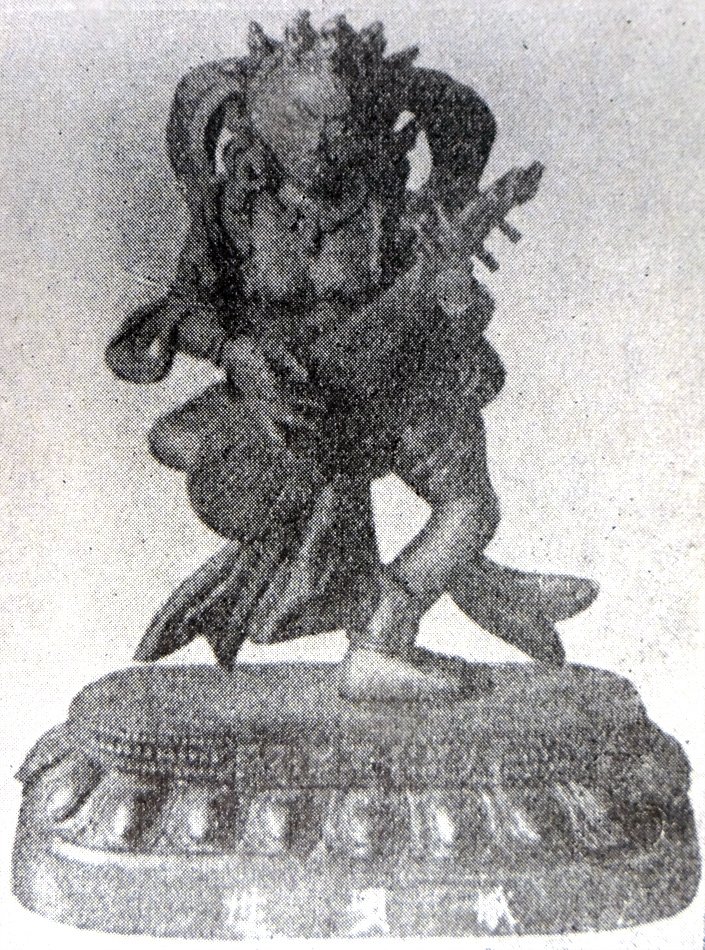The Indian Buddhist Iconography
by Benoytosh Bhattachacharyya | 1958 | 51,392 words | ISBN-10: 8173053138 | ISBN-13: 9788173053139
This page contains an iconography image of Four Dance Deities: Gita and represents figure 207 of the book Indian Buddhist Iconography, based on extracts of the Sadhanamala English translation. These plates and illustrations represent either photographs of sculptures or line-drawing reproductions of paintings or other representations of Buddhist artwork.
Figure 207 - Four Dance Deities: Gītā

Fig. 207: Gītā
(Peiping)
There are four deities in this group and they are homogenous in character. These are Lāsyā, Mālā, Gītā, and Nṛtyā, all required in the staging of a drama or in entertainments. All these four deities are popular in the Vajrayāna pantheon and are described times without number both in the Sadhānamālā as well as in the Niṣpannayogāvalī. In the Chinese collection at Peiping statuettes of these deities are found. [...] They [viz., Gītā] are violent in character with garland of severed heads, and dance in Pratyālīḍha. They show the Tarjanī against the chest as the common gesture.
3. Gītā:
Colour: reddish white;
Arms: two;
Symbol: Indian Gong.
The third deity of this group is Gītā who is described in the Pañcaḍāka-maṇḍala as under: “Gītā is reddish white in colour, and with her two hands she is engaged in playing on the Indian gong (Kaṃsī)”. Three statuettes of this goddess occur in the Chinese collection. One of these three statuettes is illustrated in Fig. 207.
